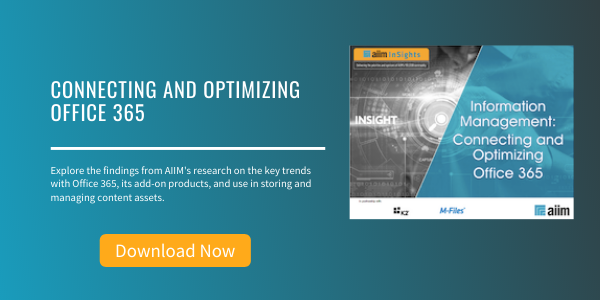
8 Ways to Control Your SharePoint Infrastructure
The eight ways to control your SharePoint infrastructure loosely fall into three buckets -- 1) Improve infrastructure performance, 2) Assert governance and control over your SharePoint infrastructure, and 3) Get more out of your SharePoint investments.
There’s no doubt that Microsoft SharePoint is big and here to stay as a platform for customized information sharing. A recent IDC study showed enterprise adoption or planned adoption of SharePoint at 70% -- and that figure seems conservative. Users are widely embracing SharePoint for tying together disconnected islands of data, integrating technology with business processes, and targeting and personalizing information for groups and individual users.
The explosion of these active and inactive team sites poses information management challenges for IT and the business. At the highest level, we believe an effective information management strategy enables enterprises to manage information growth (not be overwhelmed by it), secure information to protect intellectual property and meet regulatory mandates, employ information to drive innovation around customer needs and extend access to information to streamline the collaborative process.
Today, every information management strategy must include SharePoint, and we see eight ways to control your SharePoint infrastructure:
-
Manage Information Growth.
Manage information growth by consolidating repositories and de-duplicating the information, especially in “orphaned” sites. Moving the information from these inactive sites out of SharePoint to an appropriate lower storage tier will also save you money. The key is to ensure end-users maintain access to the information.
-
Reduce Server Sprawl and Associated Costs and Eliminate Performance Bottlenecks.
This is not an aspiration! Organizations that take an active role in limiting SharePoint farms and controlling the information silos stand to benefit. IT will immediately recognize the performance, scalability, and availability enhancements of SharePoint applications by moving data from production environments, and can reduce backup windows and costs by archiving information before conducting backups.
-
Enforce Consistent Policies across the Infrastructure.
This is to ensure you are meeting regulatory and corporate governance requirements. Create strong retention and disposition policies to protect against the risk of data loss or unintentional deletion. Organizations can derive so much value from putting the right policies in place -- namely, choice and flexibility in how you manage and place information; control to properly ensure compliance, and efficiency and leverage to extract more value from your information for competitive advantage.
-
Maintain a Steady State of Litigation Readiness.
This will reduce the costs and time of eDiscovery against SharePoint and other information sources. You’ll also mitigate risk and reduce corporate exposure associated with unmanaged content.
-
Deliver Automated Compliance with No Impact on Users.
Your objective is to ensure a transparent user experience by enabling self-service access to all the information that users need through the familiar SharePoint interface. Doing so will also reduce administrative costs.
-
Provide Centralized Information Management.
This includes policies for long-term retention and archiving for SharePoint site content by allowing SharePoint and non-SharePoint users to access and share physical and electronic content.
-
Increase Efficiency of Managing and Accessing Paper-based Information.
Scanning documents into electronic images drastically reduces paper management costs, eliminates shipping costs, and facilitates electronic storage within SharePoint. An organization can also shorten processing times by automating document and data capture and facilitating integration with SharePoint applications.
Global customers have found massive value in solutions like EMC Captiva for intelligent enterprise capture. These solutions reduce storing and shipping paper costs, improved productivity by reducing manual process handling and increasing processing speed, and deliver stronger compliance through greater controls around paper.
-
Extend and Enhance SharePoint via Additional Capabilities and Services.
We have seen numerous organizations extend the content management capabilities of SharePoint by enabling both SharePoint and non-SharePoint users to access and share physical and electronic content.
About John Mancini
John Mancini is the President of Content Results, LLC and the Past President of AIIM. He is a well-known author, speaker, and advisor on information management, digital transformation and intelligent automation. John is a frequent keynote speaker and author of more than 30 eBooks on a variety of topics. He can be found on Twitter, LinkedIn and Facebook as jmancini77. Recent keynote topics include: The Stairway to Digital Transformation Navigating Disruptive Waters — 4 Things You Need to Know to Build Your Digital Transformation Strategy Getting Ahead of the Digital Transformation Curve Viewing Information Management Through a New Lens Digital Disruption: 6 Strategies to Avoid Being “Blockbustered” Specialties: Keynote speaker and writer on AI, RPA, intelligent Information Management, Intelligent Automation and Digital Transformation. Consensus-building with Boards to create strategic focus, action, and accountability. Extensive public speaking and public relations work Conversant and experienced in major technology issues and trends. Expert on inbound and content marketing, particularly in an association environment and on the Hubspot platform. John is a Phi Beta Kappa graduate of the College of William and Mary, and holds an M.A. in Public Policy from the Woodrow Wilson School at Princeton University.



